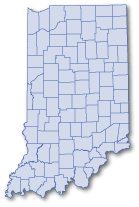Down for the Count, Up for the Data

The decennial census has a central purpose: to count everyone residing in the United States. But that purpose must be transformed into numbers of people (and their characteristics of age, race and sex) by state and locality.
The Data Products
The first aggregated numbers must be presented to President Obama by the end of this year (no later than December 31, 2010), showing the total for the nation as well as for each state in the union. Those figures will tell us quickly which states are winners or losers in terms of seats in Congress.
March to April 2011
It is the later release of data, in March or April of 2011, that will hold more interest for most of us, since we will get tallies of our population based on actual counting for the first time since 2001. Those tallies will show us the enumerated populations of all of our counties, cities, towns, townships, precincts and other geographic areas. The first people to receive these will be my office (as the state data center and Governor’s liaison to the Census) but also the leaders of each caucus in the General Assembly, the Legislative Services Agency and the Governor of Indiana. This is sometimes referred to as the P.L. 94-171 data release. It is used for apportionment and redistricting, giving us information on where the voting age population lives.
May 2011
A demographic profile of states, counties, cities, towns and townships will be released and will likely reflect much of what was in the same profile for Census 2000—total population, population by age, by sex, by race, Hispanic origin and housing tenure (owned or rented).
June to August 2011
So called Summary File 1 will be released with the data collected for all geographic areas down to census block, which will be particularly useful to everyone who needs to use that information to produce maps or have a GIS layer using block-level data. It will also be helpful to neighborhood groups, cities and many others who want to see what basic changes have occurred between the censuses, where an area’s age could have shifted dramatically or its racial composition changed significantly.
It is important to note here what we won’t get: no data on income, poverty, education, commuting or what I like to call the “juicy bits.” However, by August or September of 2011 we should see the release of census tract data from the American Community Survey, which is essentially what used to be the long-form transformed to an annual survey.
The Geography Products

Geography is critical to the census and to our understanding of the data results, and this has been true since the first census in 1790. It wasn’t until the early part of the 20th century, though, that researchers realized the value of the geographic units the Census Bureau used to collect the information, and by the 1960 Census and the first Geographic Based File (GBF), a cadre of people began viewing the information by those census tracts and census blocks to try to understand the spatial nature of population change.
Probably the most important geographic product today is TIGER (that is, the Topologically Integrated Geographic Encoding and Referencing system), which provides us with the critical boundary information needed to create maps and then show the census demographics within those maps. TIGER/Line was arguably the progenitor what became a whole new industry—GIS—and while much is done to enhance TIGER’s basic information (and correct it), it remains the foundation of all mapping done today for places in the United States.
The latest TIGER/Line shapefiles (the Census Bureau turned to that most common of formats a few years ago) were released in the fall of 2009 and reflect the current collection geography of Census 2010. It also reflects the latest boundaries for legal entities as of January 1, 2009. Almost as useful, TIGER/Line shapefiles include spatial data for geographic features such as roads, railroads, rivers, and lakes, as well as legal and statistical geographic areas that correspond to the 2009 American Community Survey, 2009 Population Estimates, 2007 Economic Census, and Census 2000.
For more information, don’t hesitate to e-mail us at ibrc@iu.edu, as we are always happy to help!
Useful Materials for Further Edification
- A good overview of the geography in brochure format: http://www2.census.gov/geo/pdfs/partnerships/geo_counts2010.pdf
- A complete list of anticipated products: 2010.census.gov/news/pdf/data_release_schedule.pdf
- Geographic boundary change notes: www.census.gov/geo/www/bndrychanges/boundary_changes.html
Carol O. Rogers
Deputy Director and Governor’s Census Liaison, Indiana Business Research Center, Indiana University's Kelley School of Business
